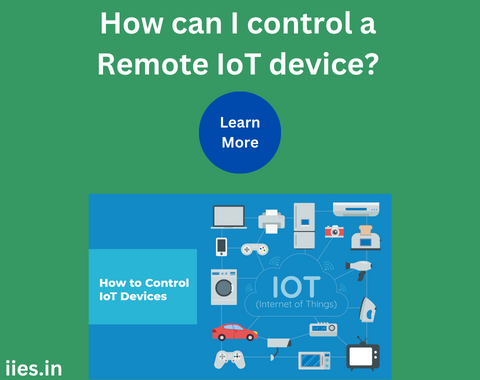
In the fast-paced landscape of technology, the Internet of Things (IoT) has emerged as a transformative force, connecting the physical and digital worlds seamlessly. One of the significant strides in this realm is the advent of remote IoT devices, heralding a new era of efficiency, connectivity, and convenience. This article explores the multifaceted aspects of remote IoT devices, delving into their applications, benefits, challenges, and the promising future they hold.
Remote IoT devices are essentially connected devices that can be monitored, controlled, and accessed remotely through the internet. These devices leverage IoT technology to enable seamless communication, data exchange, and real-time management from a centralized location. Unlike traditional devices that require physical proximity for operation, remote IoT devices empower users to interact with them regardless of their geographical location.
The versatility of remote IoT devices has led to their widespread adoption across various industries, revolutionizing the way businesses operate. In agriculture, for instance, farmers can remotely monitor soil conditions, irrigation systems, and even control equipment, optimizing resource utilization and crop yields. In healthcare, remote patient monitoring devices enable healthcare professionals to track vital signs and provide timely interventions, enhancing patient care and reducing the need for frequent hospital visits.
In manufacturing, IoT-powered remote devices facilitate predictive maintenance, ensuring that equipment is serviced before it fails, thereby minimizing downtime and increasing operational efficiency. Smart homes are another domain where remote IoT devices shine, allowing users to control lighting, thermostats, security systems, and appliances with a simple tap on their smartphones, offering a new level of convenience and energy efficiency.
1. Enhanced Efficiency: Remote IoT devices streamline operations by providing real-time insights and control. This leads to improved efficiency, as businesses can make data-driven decisions promptly, reducing delays and enhancing overall productivity.
2. Cost Savings: The ability to monitor and manage devices remotely translates into cost savings. Predictive maintenance, for instance, helps prevent costly equipment failures, while energy-efficient control of appliances in smart homes contributes to reduced utility bills.
3. Increased Accessibility: The remote nature of these devices makes them accessible from anywhere with an internet connection. This accessibility fosters a more agile and responsive approach to device management, making it easier for users to stay connected and in control.
4. Data-Driven Insights: Remote IoT devices generate vast amounts of data, providing valuable insights into user behavior, device performance, and environmental conditions. This data can be analyzed to make informed decisions, optimize processes, and drive innovation.
While remote IoT devices offer numerous benefits, their implementation comes with certain challenges and considerations:
1. Security Concerns: The increased connectivity of remote IoT devices raises security concerns. Protecting against unauthorized access and data breaches is paramount, necessitating robust security measures such as encryption, authentication, and regular software updates.
2. Interoperability: The diverse ecosystem of IoT devices may lead to interoperability issues, hindering seamless communication between devices from different manufacturers. Standardization efforts are underway to address this challenge and ensure compatibility across devices.
3. Scalability: As the number of connected devices grows, scalability becomes a critical consideration. Infrastructure must be designed to handle increasing data volumes and device connections without compromising performance.
4. Privacy Considerations: The collection and utilization of personal data by remote IoT devices raise privacy concerns. Implementing transparent data practices and adhering to privacy regulations are essential to build trust among users.
The future of remote IoT devices is promising, with ongoing advancements poised to address current challenges and unlock new possibilities. Some key trends and developments include:
1. 5G Connectivity: The rollout of 5G networks is set to revolutionize the IoT landscape, providing faster and more reliable connectivity. This will enhance the capabilities of remote IoT devices, enabling high-speed data exchange and low-latency communication.
2. Edge Computing: To address issues of latency and bandwidth, edge computing is gaining prominence. This involves processing data closer to the source (at the edge of the network), reducing the need to transmit large volumes of data to centralized servers. This approach enhances the real-time capabilities of remote IoT devices.
3. Artificial Intelligence Integration: The integration of artificial intelligence (AI) with remote IoT devices will enable more sophisticated data analysis and decision-making. AI algorithms can autonomously identify patterns, predict future events, and optimize device behavior, leading to increased automation and efficiency.
4. Sustainability Focus: The IoT industry is increasingly focusing on sustainability, with efforts to reduce the environmental impact of devices. This includes designing energy-efficient devices, using eco-friendly materials, and adopting circular economy principles in device manufacturing and disposal.
Remote IoT devices represent a transformative force that is reshaping the way we interact with technology. From smart homes to industrial settings, the ability to monitor, control, and manage devices remotely is unlocking new levels of efficiency, accessibility, and connectivity. While challenges such as security and interoperability persist, ongoing technological advancements and a commitment to best practices are paving the way for a future where remote IoT devices play a central role in creating a more connected and intelligent world. As we navigate this exciting frontier, it is essential to strike a balance between innovation and responsibility, ensuring that the benefits of remote IoT devices are harnessed ethically and sustainably for the betterment of society.
Indian Institute of Embedded Systems – IIES